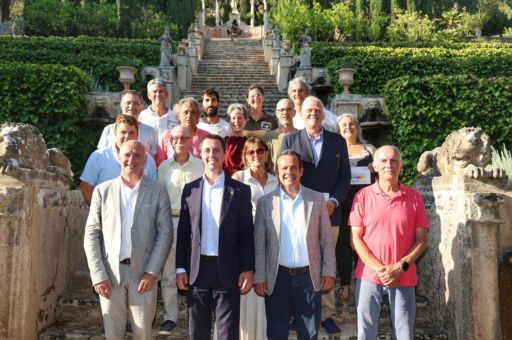The President of the Consell de Mallorca announced the ceremony marking the 14th anniversary of the Serra de Tramuntana’s designation as a UNESCO World Heritage Site, in which tribute was paid to the people who make its preservation and conservation possible.
The estate of Raixa hosted the commemorative event celebrating the 14th anniversary of the Serra de Tramuntana’s inclusion on UNESCO’s World Heritage List. The ceremony, presided over by the President of the Consell de Mallorca, Llorenç Galmés, was attended by nearly one hundred people, including the Minister of the Presidency, Antoni Fuster; the Minister of Finance and Public Administration, Rafel Bosch; the Serra de Tramuntana island director, Antoni Solivellas; the Consortium’s manager, Lluís Vallcaneras; and several mayors of Serra municipalities.
During the event, President Galmés announced that the Consell de Mallorca will present in September the draft of the proposed new Serra de Tramuntana law. The legislation aims to strengthen the protection of its value as a cultural landscape, in line with UNESCO’s criteria.
TDB keeps you informed. Follow us on: Facebook, Twitter and Instagram
President Galmés Announces Draft Law for the Serra de Tramuntana to Be Presented in September
Galmés explained that this regulation seeks to be the result of a broad consensus with all stakeholders involved, to address the real management needs of the Serra. According to the president, the goal is to develop “a law that protects heritage, promotes traditional agriculture, supports livestock farming, preserves olive groves and holm oak forests, and addresses challenges such as overcrowding or noise pollution.”
The draft will also include proposals from the prior public consultation process, which highlighted three main demands: administrative simplification to facilitate conservation and development initiatives; adequate and stable funding to ensure continuity of actions without relying on ad hoc calls; and the recovery of heritage and former farmland, key to maintaining the viability of the cultural landscape. The law will also include specific recognition of the role of the agricultural and livestock sectors and the development of protection catalogues for heritage assets such as springs, estates, or archaeological sites.
Meanwhile, the Minister of the Presidency, Antoni Fuster, recalled that “on June 29, 2011, UNESCO formally recognised what many already knew: that the Serra de Tramuntana is a global treasure, a unique cultural landscape. But long before that declaration, the Serra was already alive, heritage. Thanks to all the hands that have cared for it with effort and dedication over the generations.” Fuster emphasised the fundamental role of farmers and all those who have contributed to preserving this living legacy, which today is a source of collective pride.
The event honoured all those who, through their daily work cultivating the land, make it possible to conserve this cultural landscape: farmers, dry stone wallers (margers), and families who lovingly preserve their inherited legacy. During the tribute, the audiovisual piece “Patrimoni amb nom i llinatges” was premiered, featuring some of these individuals. There was also a shared reading—by a 14-year-old, an adult, and a grandparent—of the UNESCO criteria that the Serra de Tramuntana fulfils.
Recognition plaques of the “Distintiu Serra de Tramuntana” were also awarded to companies that have recently joined, acknowledging their commitment to responsible production within the region and their respect for its values. There are now 22 companies holding this designation. The celebration featured a musical performance by singer Aina Tramullas and pianist Gori Matas, who performed a piece created especially for the occasion. The event concluded with a tasting of products certified with the Serra de Tramuntana Distinction, organised by Més Cultura, Patrimoni i Turisme.
Participation Council
Before the institutional event, the annual plenary meeting of the Consell de Participació was held, the highest advisory body of the Serra de Tramuntana Consortium, which brings together the groups involved in its conservation. During the meeting, the work of the past two years was presented, including a budget increase for the organisation that enabled more funds for cultural landscape maintenance grants, as well as continued support for awareness, education, and sponsorship programs. The boost to the “Distintiu Serra de Tramuntana” was also highlighted, with new companies joining and a new market stall opening at Mercat de l’Olivar in Palma.
